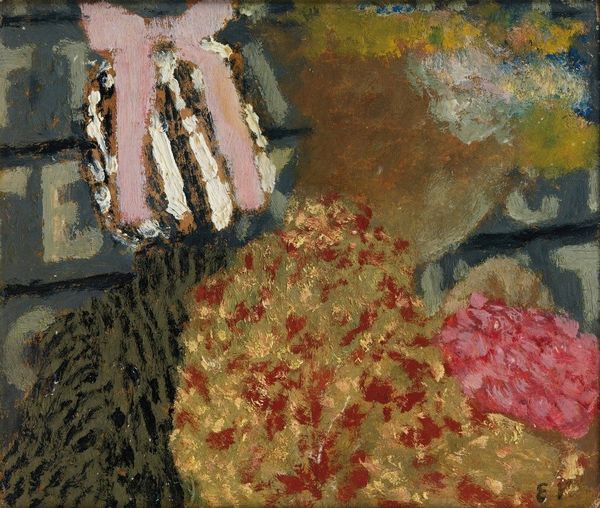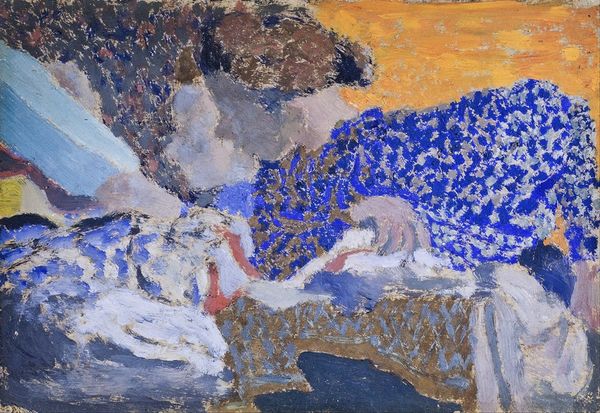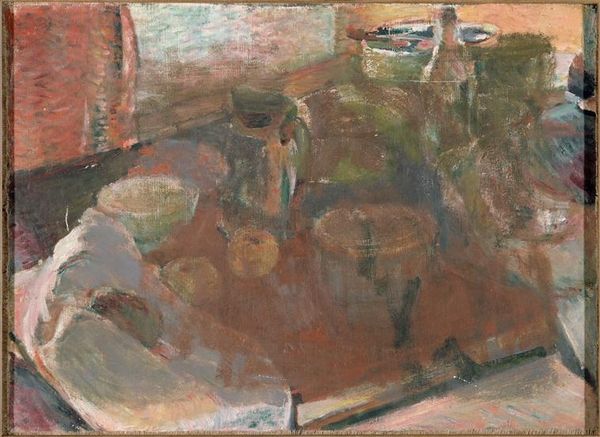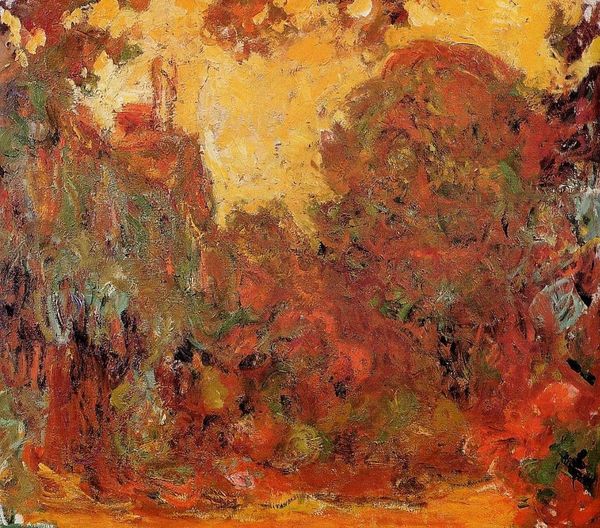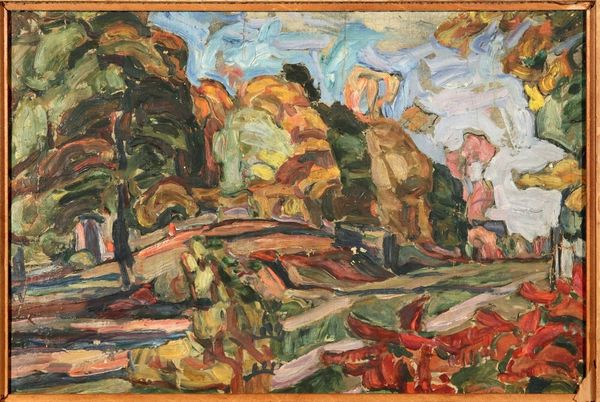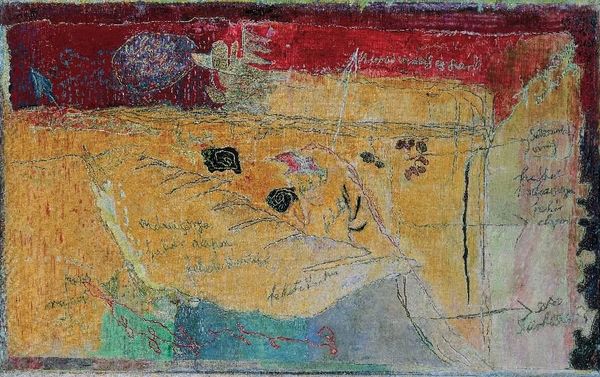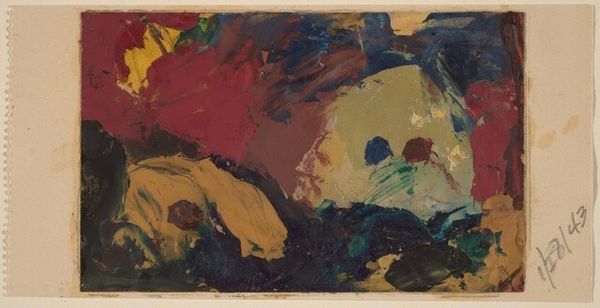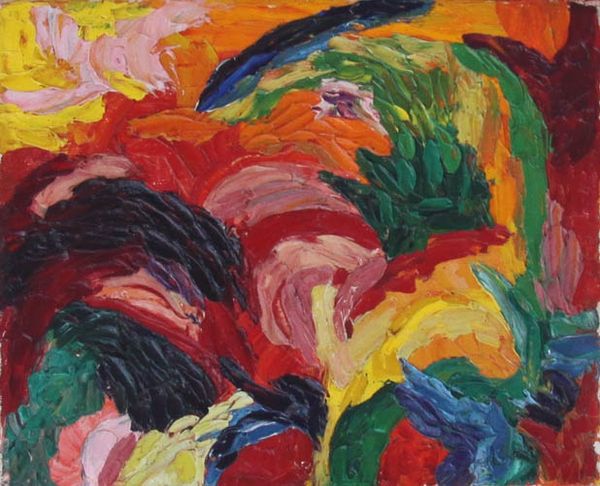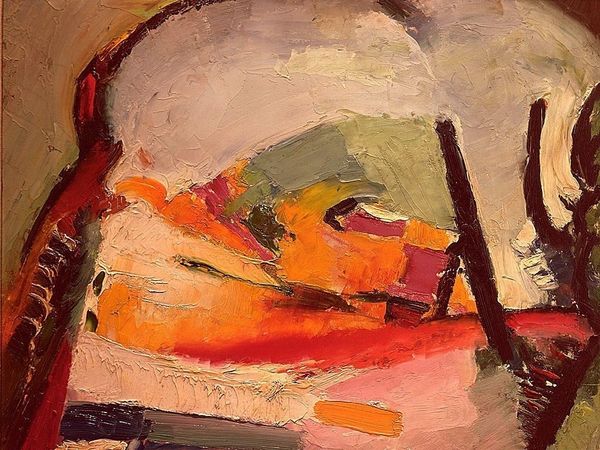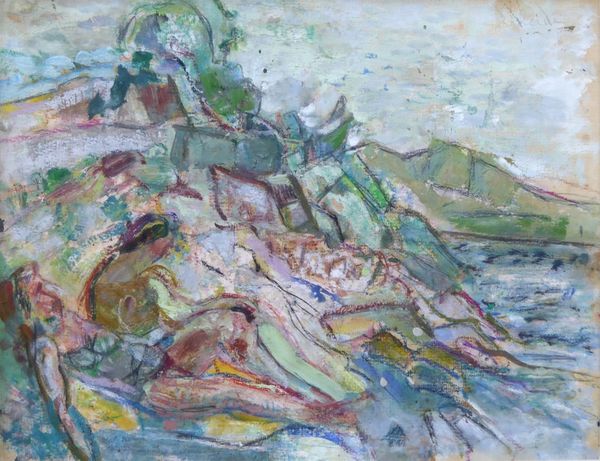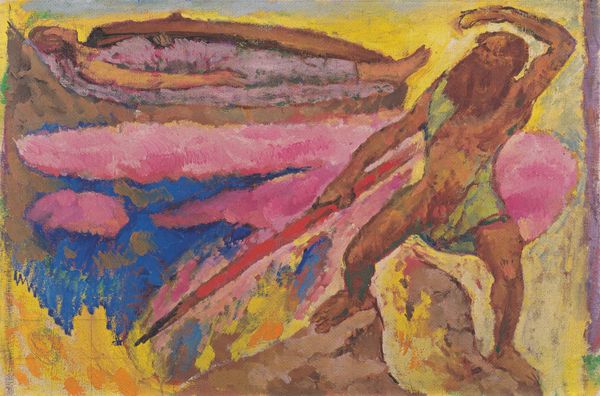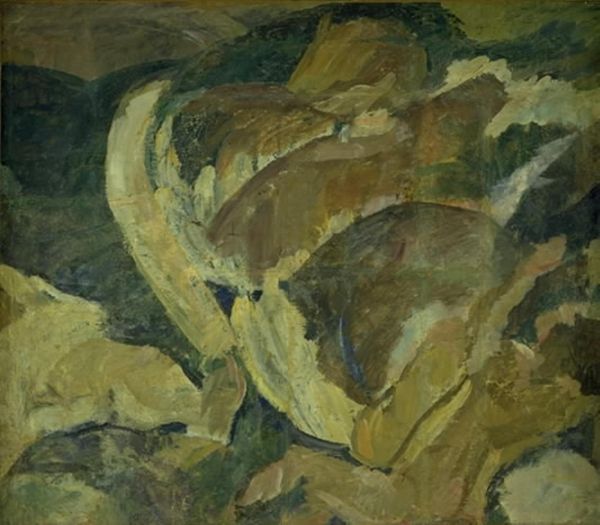
painting, oil-paint
#
fauvism
#
painting
#
oil-paint
#
landscape
#
abstraction
#
modernism
Copyright: Modern Artists: Artvee
Curator: Henri Matisse crafted this oil painting between 1905 and 1906. It’s titled, *Sketch for Le Bonheur de vivre.* What are your initial thoughts? Editor: My immediate response is a sense of joyful abandon, ironically. The vibrant color patches are really a bold exploration, almost like an explosion of pure feeling. But at the same time, I see the violence against the artifice that suppresses instinct. Curator: I think you've intuited something profound. As a preliminary sketch, we can sense him experimenting with a modern kind of Eden, maybe attempting to reimagine Arcadian ideals stripped of traditional symbolic constraints. It really emphasizes feeling above rigid form. Editor: Indeed, that radical fauvist aesthetic rejects academic naturalism. Looking closer, it seems the sketch form is like a commentary on that rejection of previous generations, right? The quick, broad strokes disrupt expected ideas about painting and who that type of painting could be *for.* It brings into the fore the act of creation. Curator: You highlight a powerful shift—painting becoming about process rather than solely representation. But also look closely at the placement of colours; it suggests more than disruption. There are groupings—earthy tones at the bottom, lighter pinks, yellows, greens toward the top, an order emerging that perhaps nods to older symbols for grounding and for transcendence. What does "happiness" or "life's pleasures" actually entail for us? Editor: True, I get that. It does suggest the idea that hedonism isn’t just a riot; rather that even ecstasy still must adhere to hierarchical ordering principles. It speaks to enduring anxieties about liberation. Still, I cannot forget the violence Matisse enacts against inherited ideals about beauty, line, and grace here! Curator: Yes! He is dismantling in order to build. By stripping away visual ornamentation, he leaves these elemental blobs that might point us to the universal emotional forces behind classical art, like a Freudian study of the *Id* behind aesthetic form, almost. Editor: Well, I can definitely get on board with that last idea... Maybe Matisse wanted to drag art, kicking and screaming, into the twentieth century!
Comments
No comments
Be the first to comment and join the conversation on the ultimate creative platform.

